Poets' Walk is located in Red Hook, New York, United States on the River Road (just north of the Kingston-Rhinecliff Bridge, New York State Route 199). It is intended to celebrate the connection between landscape and poetry. The classic wooden vistas, sunlit fields and thick forest were the main focus of landscape architect Hans Jacob Ehlers' vision for the property in 1849.
The park's mown and gravel paths are variously lined with wooden benches, and provide access to the 120 acres (0.49 km2) of fields and forest, as well as river views. The park's walls of foliage and stone evoke outdoor "rooms" that reflect the 1849 landscape aims of Ehlers. [1]
The distance from the Information Arbor at the beginning of the path to the Overlook Pavilion is about half a mile, and at a leisurely pace takes the average walker about 15 minutes. The return trip is slightly uphill and a bit longer. From the Pavilion to the Summerhouse (via the Poets' Walk Path) is an additional 20 minutes (one way), and from the Pavilion to the Flagpole is also 20 minutes (one way).
The Poet's Walk Park property was originally part of an 1688 land grant to Colonel Pieter Schuyler of Albany.
Around 1800, General John Armstrong Jr., who was married to Alida Livingston, daughter of Judge Robert Livingston (1718–1775) and Margaret (née Beekman) Livingston of Clermont, sold his farm/estate of "Almont". For the next ten years, Armstrong served first in Congress as a Senator from New York, then as Minister to France. Around 1811, he established an estate a little farther north in Barrytown. The Armstrongs called the estate La Bergerie. Here they raised Merino sheep, which had been given to Armstrong by Napoleon. In 1818, their daughter, Margaret, married William Backhouse Astor Sr. Around 1835, Astor purchased the 728-acre estate for a summer home; Margaret Astor renamed it "Rokeby".
In September 1844, their daughter, Laura Eugenia Astor, married merchant/financier Franklin Hughes Delano. As a wedding present, William Astor gave the couple the southernmost 100 acres of "Rokeby". The estate became known as "Steen Valetje" (which means "little stone valley" in Dutch). [2]
In 1849, the Astors and the Delanos commissioned German born landscape gardener Hans Jacob Ehlers to improve the grounds at "Rokeby" and "Steen Valetje", in the course of which he constructed a woodland path called the "Poet's Walk" in honor of Washington Irving and Fitz-Greene Halleck who are said to have strolled there. [3]
The park has been visited by many literary figures, including William Cullen Bryant (1794–1878) and Jack Kerouac (1922-1969).
Today, the visual integrity of the Park and its setting is protected by the Scenic Hudson Land Trust's conservation easements on the surrounding 800 acres (3.2 km2). [4] The park is open from 9am until dusk (6pm in winter, 8pm during summer). Scenic Hudson retained Optimus Architecture to design both the information kiosk at the trailhead and the rustic Overlook Pavilion, where visitors will find the best scenic views in the park. The project received a design award from the New York Chapter of the Society of American Registered Architects. [5]

Robert Livingston the Elder was a merchant, fur trader and government official in colonial New York. He was granted a patent to 160,000 acres of land along the Hudson River, becoming the first lord of Livingston Manor.

John Jacob Astor IV was an American business magnate, real estate developer, investor, writer, lieutenant colonel in the Spanish–American War, and a prominent member of the Astor family. He died in the sinking of the RMS Titanic during the early hours of April 15, 1912. Astor was the richest passenger aboard the RMS Titanic and was thought to be among the richest people in the world at that time, with a net worth of roughly $87 million when he died.

William Backhouse Astor Sr. was an American business magnate who inherited most of his father John Jacob Astor's fortune. He worked as a partner in his father's successful export business. His massive investment in Manhattan real estate enabled major donations to the Astor Library in the East Village, which became the New York Public Library.

John Armstrong Jr. was an American soldier, diplomat and statesman who was a delegate to the Continental Congress, U.S. Senator from New York, and United States Secretary of War under President James Madison. A member of the Democratic-Republican Party, Armstrong was United States Minister to France from 1804 to 1810.
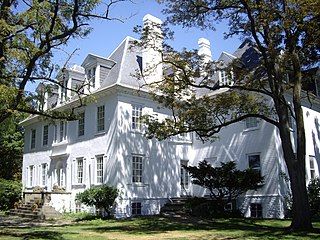
The Clermont State Historic Site, also known as the Clermont estate, the Clermont Manor or just Clermont, is a New York State Historic Site in southwestern Columbia County, New York, United States. It protects the former estate of the Livingston family, seven generations of whom lived on the site over more than two centuries.
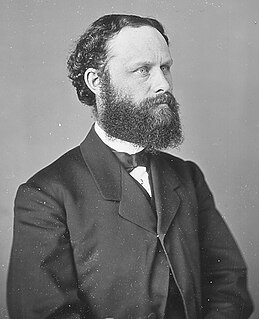
John Winthrop Chanler was a prominent New York lawyer and a U.S. Representative from New York. He was a member of the Dudley–Winthrop family and married Margaret Astor Ward, a member of the Astor family.
West Park is a hamlet on the west side of the Hudson River in the Town of Esopus, Ulster County, New York, United States. During the nineteenth and early twentieth centuries, the area became attractive to the well-to-do seeking second homes because it provided privacy, clean water and relatively inexpensive property.

Montgomery Place, now Bard College: The Montgomery Place Campus, near Barrytown, New York, United States, is an early 19th-century estate that has been designated a National Historic Landmark. It is also a contributing property to the Hudson River Historic District, itself a National Historic Landmark. It is a Federal-style house, with expansion designed by architect Alexander Jackson Davis. It reflects the tastes of a younger, post-Revolutionary generation of wealthy landowners in the Livingston family who were beginning to be influenced by French trends in home design, moving beyond the strictly English models exemplified by Clermont Manor a short distance up the Hudson River. It is the only Hudson Valley estate house from this era that survives intact, and Davis's only surviving neoclassical country house.

The Hudson River Historic District, also known as Hudson River Heritage Historic District, is the largest Federally designated district on the mainland of the contiguous United States. It covers an area of 22,205 acres extending inland roughly a mile (1.6 km) from the east bank of the Hudson River between Staatsburg and Germantown in Dutchess and Columbia counties in the U.S. state of New York. This area includes the riverfront sections of the towns of Clermont, Red Hook, Rhinebeck and part of Hyde Park. This strip includes in their entirety the hamlets of Annandale, Barrytown, Rhinecliff and the village of Tivoli. Bard College and two protected areas, Margaret Lewis Norrie State Park and Tivoli Bays Unique Area, are also within the district.
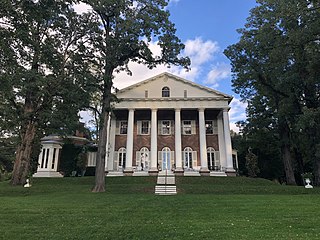
Edgewater is an architecturally significant, early 19th-century house located near the hamlet of Barrytown in Dutchess County, New York, United States. Built about 1824, the house is a contributing property to the Hudson River Historic District. Edgewater's principal architectural feature is a monumental colonnade of six Doric columns, looking out across a lawn to the Hudson River. Writing in 1942, the historians Eberlein and Hubbard described Edgewater as an exemplar of "the combined dignity and subtle grace that marked the houses of the Federal Era."
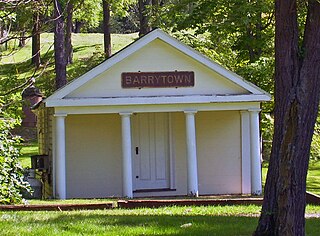
Barrytown is a hamlet within the town of Red Hook in Dutchess County, New York, United States. It is within the Hudson River Historic District, a National Historic Landmark, and contains four notable Hudson River Valley estates: Edgewater, Massena, Rokeby, and Sylvania.

William Backhouse Astor Jr. was an American businessman, racehorse owner/breeder, and yachtsman who was a member of the prominent Astor family. His elder brother, financier and philanthropist John Jacob Astor III, became head of the British line of Astors in England. William Jr. was head of the American line of Astors, while his wife, Caroline Schermerhorn, served as the leader of New York society's "Four Hundred" during the Gilded Age.

Rokeby, also known as La Bergerie, is a historic estate and federally recognized historic district located at Barrytown in Dutchess County, New York, United States. It includes seven contributing buildings and one contributing structure.
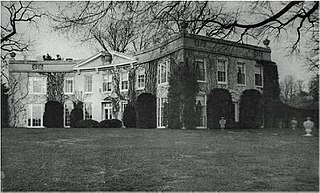
Locusts on Hudson is a 76-acre (31 ha) estate in Staatsburg, New York, owned by hotelier André Balazs. The property has both an operating farm and manor. The historic estate now acts as an events venue due in part to its naturalistic landscape. A portion of the produce and animals of the farm are sent to The Standard Grill, The Standard, High Line Hotel, and Narcissa at The Standard, East Village Hotel, also owned by Balazs, in New York City, New York. Designed by architect John Churchill in the early 1940s, the estate's manor is of a neo-baroque style. Beside the manor, there are many grey and white antique remnants of dairy barns on the property.
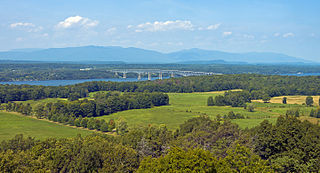
Ferncliff Forest is a 200-acre (0.81 km2) old-growth forest preserve of deciduous and hemlock trees located in Rhinebeck, a town in the northern part of Dutchess County, New York, USA. The property had been bought in 1900 by John Jacob Astor IV and remained in the Astor family until 1964, when it was donated as a forest preserve and game refuge.
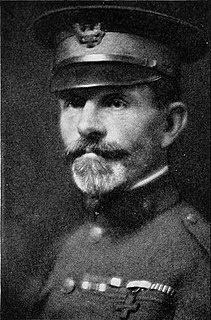
Winthrop Astor Chanler was an American sportsman and soldier who fought in the Spanish–American War and World War I.

Warren Delano IV was an American horseman and coal tycoon.
Franklin Hughes Delano was an American merchant, diplomat and society man.
Roland Livingston Redmond was an American lawyer who served as the president of the Metropolitan Museum of Art
Ferncliff Farm was an estate established in the mid 19th century by William Backhouse Astor Jr. (1829–1892) in Rhinebeck, New York. Not far from his mother's estate of Rokeby, where he had spent summers, Ferncliff was a working farm with dairy and poultry operations, as well as stables where he bred horses. In 1902, his son and heir John Jacob Astor IV commissioned Stanford White to design a large sports pavilion, which included one of the first indoor pools in the United States. The sports pavilion was later converted into a residence for his son, Vincent Astor.
Coordinates: 41°58′55″N73°55′01″W / 41.981910°N 73.917063°W